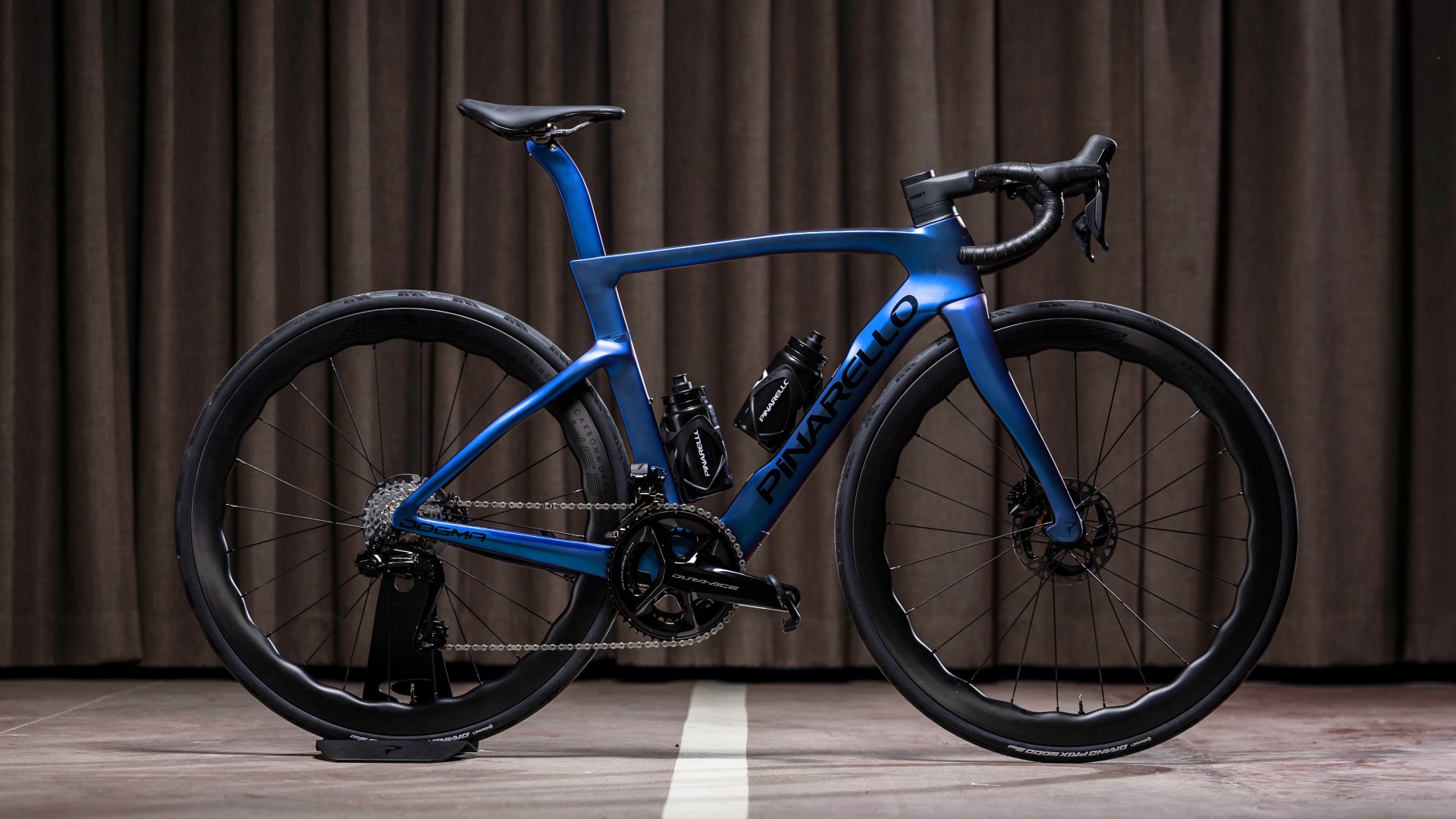
Today, Pinarello has launched its latest incarnation of the Pinarello Dogma F race bike, alongside claims of improved aerodynamics and tangible weight loss - just 6.63kg for the lightest full build in a size 53.
The new bike, which Cycling Weekly first spotted on a training camp in Tenerife, will be the weapon of choice for the Ineos Grenadiers team at this year's Tour de France, and fittingly, it has been designed specifically around Grand Tour data.
A combination of ‘cutting edge technology with aesthetic beauty’ according to Pinarello, we certainly agree that the new bike, like its predecessor, is a looker - but how does the technology stack up?
Designed by Tour de France data
It’s been 22 years since the first incarnation of the Pinarello Dogma launched in 2002, and since then technology has come a long way. The latest iteration of the Dogma F follows a design process that all started with an in-depth analysis of Geraint Thomas’s 2022 Tour de France.
Ineos Grenadiers’ performance team found that a 0.2% improvement in aerodynamic efficiency would equate to a 175g saving on the bike. This knowledge laid the foundations for Pinarello’s design team throughout the project.
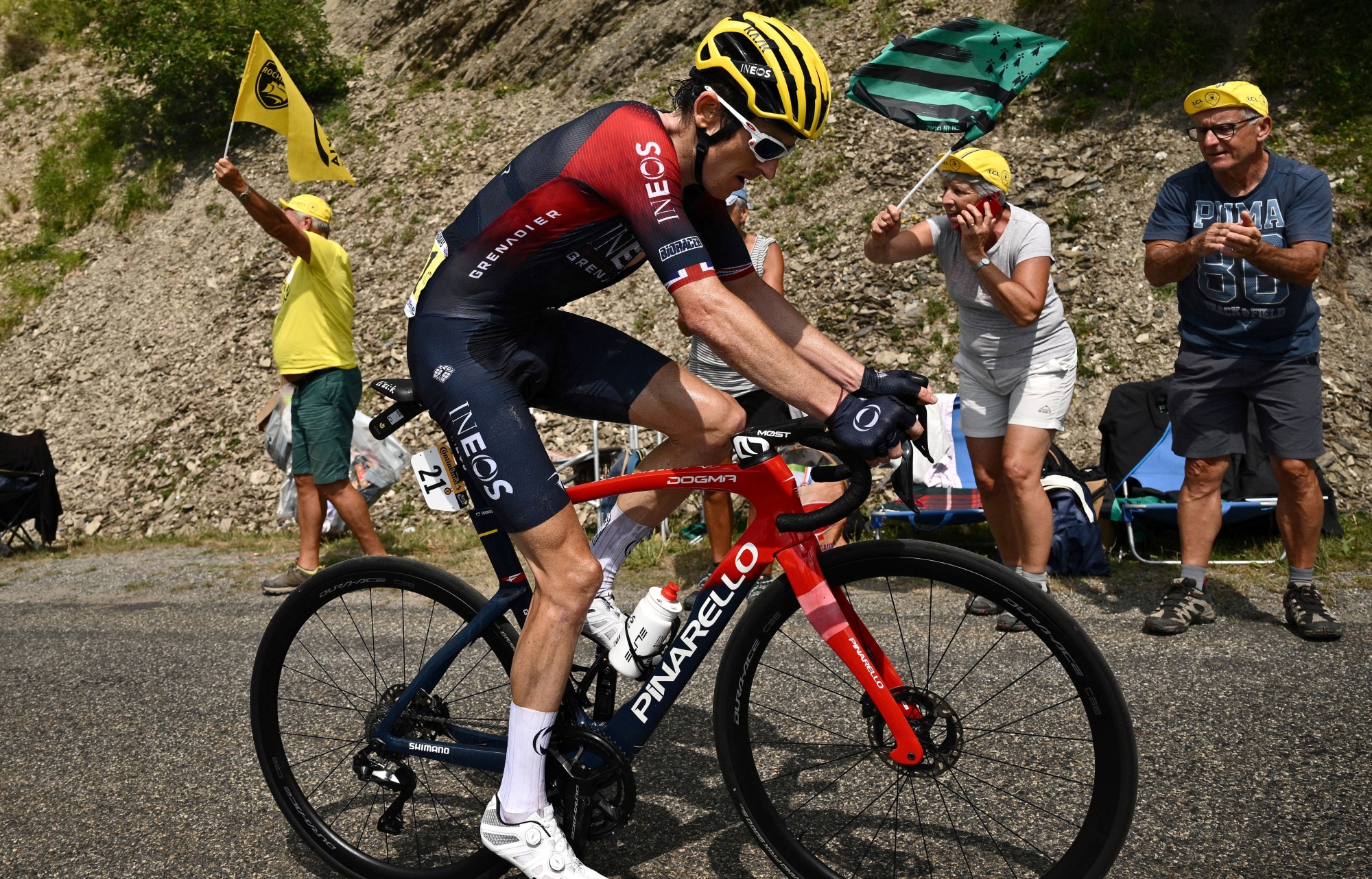
The analysis was helped by a complex model that allowed engineers to establish the magnitude of gains made from both weight saving and aerodynamic optimizations, based on G's Tour data. This, Pinarello believes, has allowed them to design the bike around real-world conditions, rather than pleasing wind tunnel engineers alone.
Aero optimisations continue
Saving 175 grams off of an already advanced frame is no mean feat - so the new Dogma F focuses on small, but notable optimisations throughout the bike in order to go after ever-desired 'free speed'.
Overall, the silhouette of the new Dogma F doesn’t stray far from the outgoing model, but there are some notable changes - most obviously at the front end.
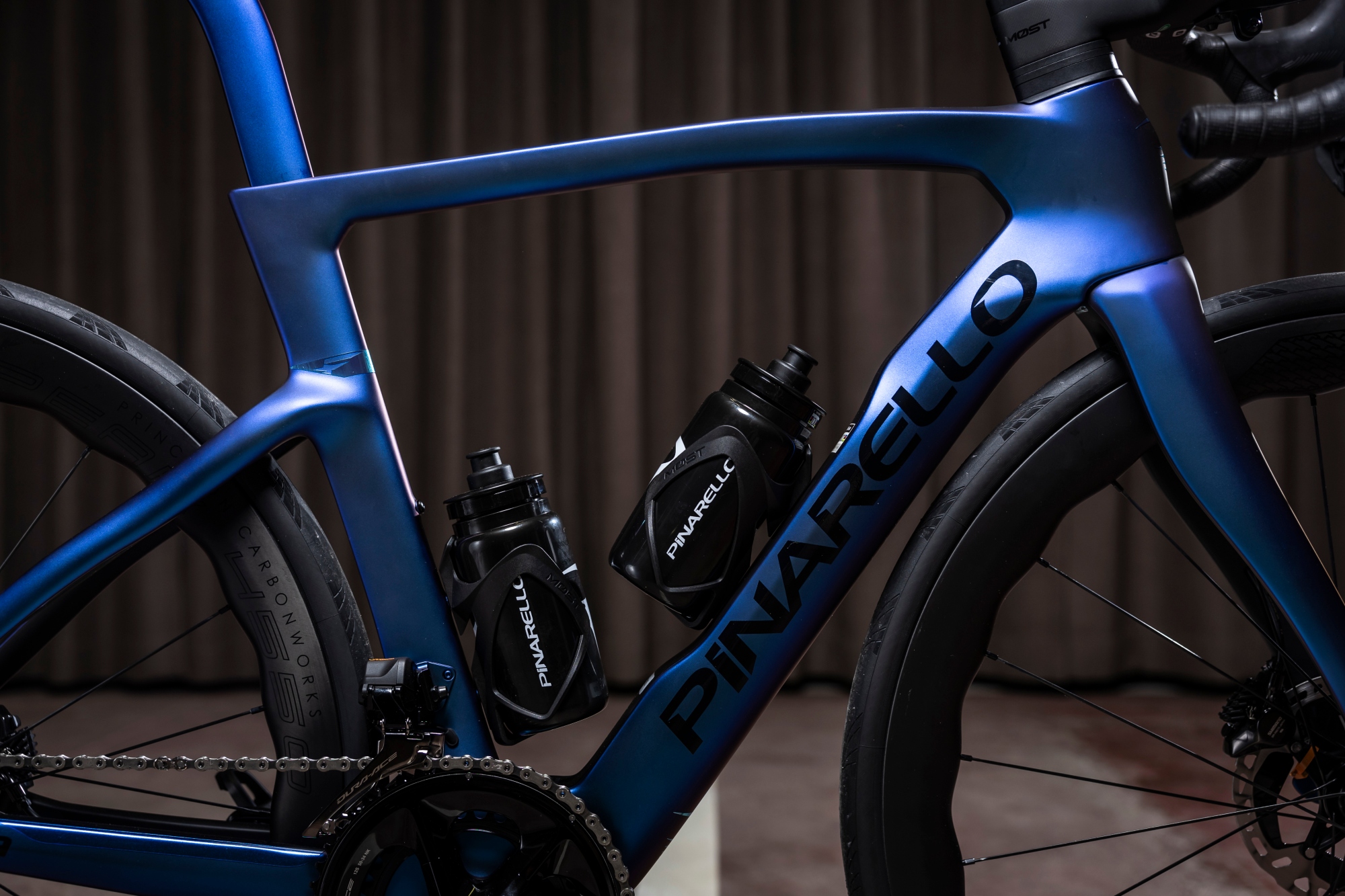
Pinarello has completely redesigned the front of the bike, paying particular attention to the head tube. The new Dogma F features a deeper head tube than before, similar to many bikes that have been released in the past twelve months.
The new Dogma F has somewhat of a protruding nose cone too, which, pioneered back in 2014 on the Pinarello Dogma F8, is similar to the polarizing 'speed sniffer' headtube seen on the Specialized Tarmac SL8.
It's a narrower head tube too - by 8mm - which is not to be 'sniffed' at, and further aids the new bike's air-slicing capabilities. It's been made possible by a new oval-shaped steerer that also allows for improved cable routing - more on that later.
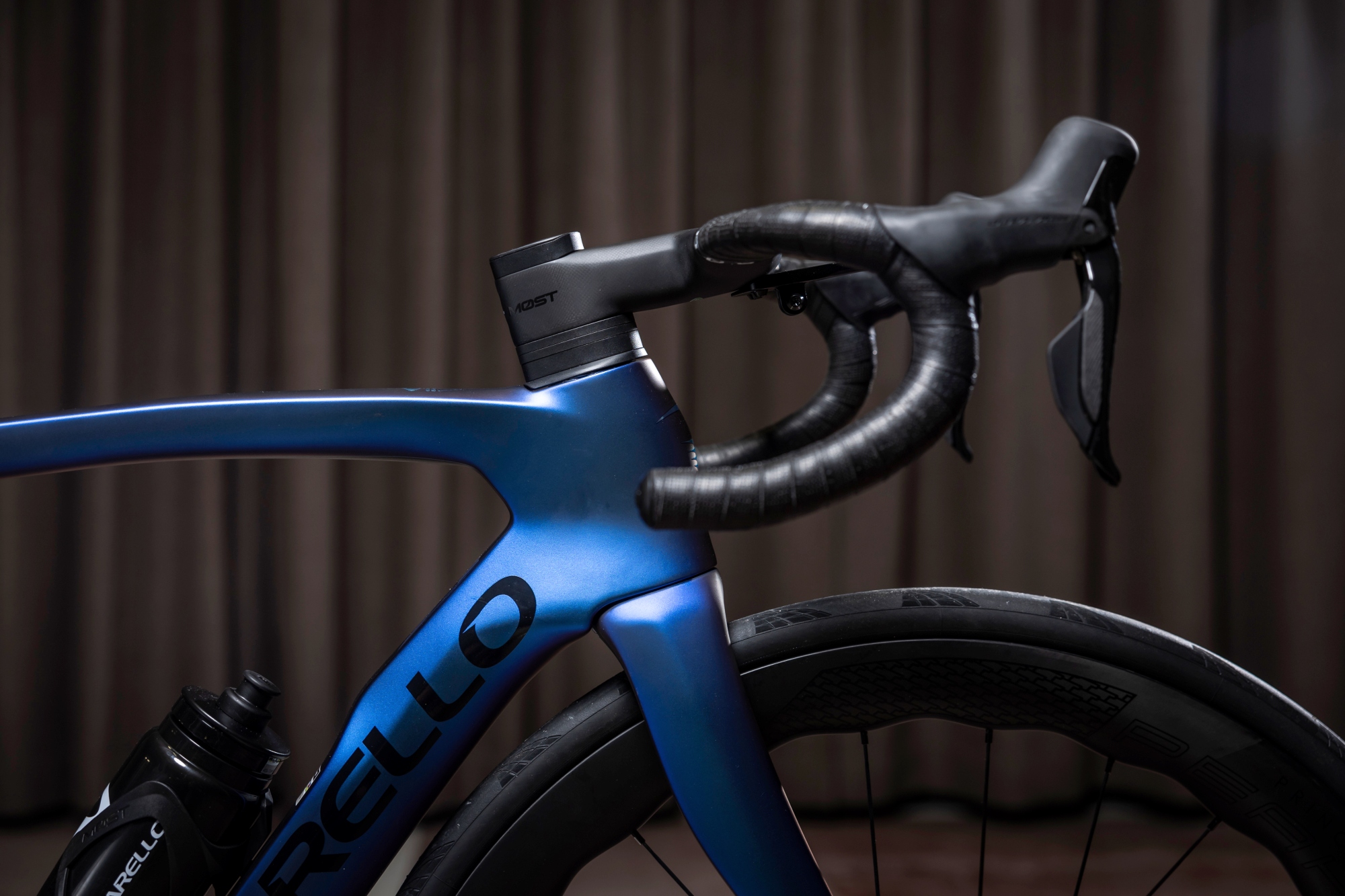
Moving down towards the bottom of the bike we are greeted with our next big change - the all new 'Aero-Keel' bottom bracket.
Pinarello says it has rotated the down tube through 3.5 degrees in order to create a keel shape that improves the aerodynamic performance of the bottom bracket area by 1.2%.
As for stiffness in this area, well, Pinarello hasn't mentioned any specific remarks about the bottom bracket, but going off of size alone, it looks to have been at the very least conserved.
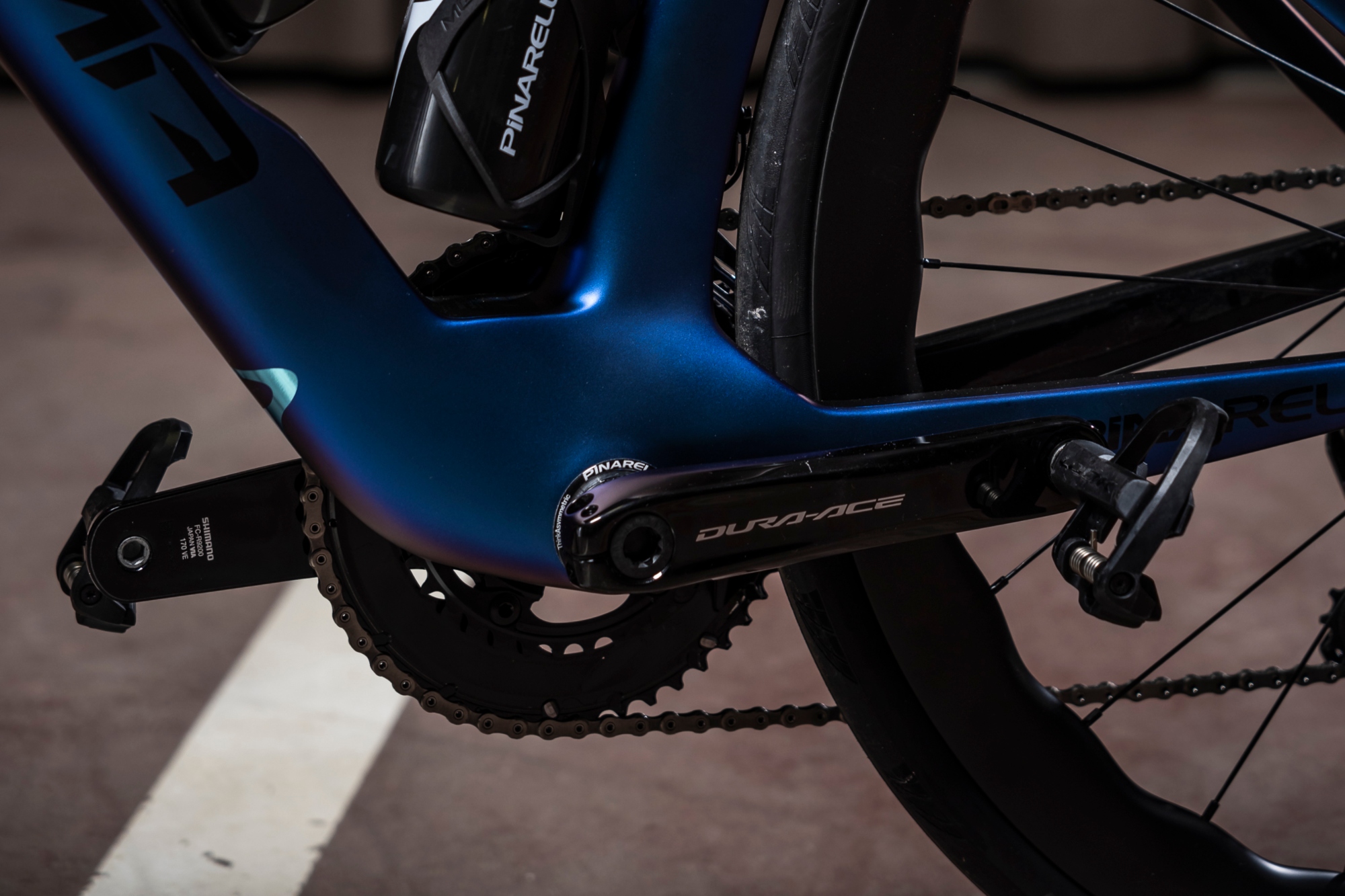
When is all said and done, the improvements make for a 0.2% improvement in CdA, which is less than ground-breaking, but remember, that comes in conjunction with a noticeable weight loss.
Perceptible weight loss
An area where the outgoing Dogma F was open to scrutiny was frameset weight. When Pinarello ditched the numerical suffix with the outgoing Dogma F back in 2021, it brought to market a bike that was certainly aero, but at 850g for a relatively small size 53 frame, was a little way off the climbing bike competition.
For this year though, that has all changed. Pinarello claims to have dropped 108 grams off of the new frameset, thanks to new and improved carbon fiber technology from factory partner Toray.
We must mention though, that this is a system weight reduction, so weight savings come from the frame, fork, and handlebar too.
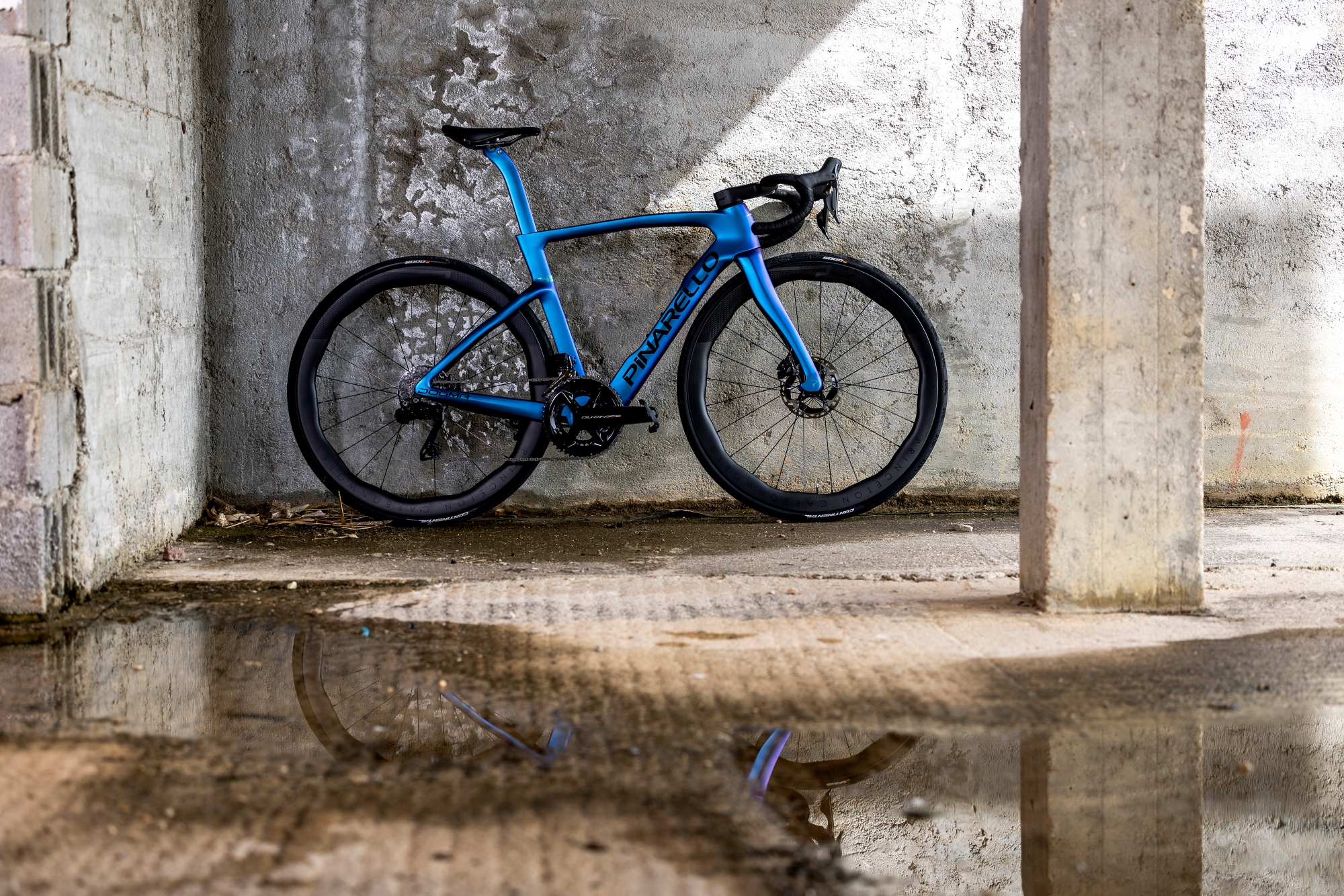
The new Pinarello Dogma features Toray's new M40X carbon fiber that Pinarello says is the result of 'countless hours of testing on X-light frame models, and Ineos Grenadiers' bikes'.
The M40X high modulus carbon fiber is said to have a higher stiffness rating than the Aerospace grade T1100 carbon used on the outgoing Dogma F, and as such has allowed the Italian brand to 'take lateral stiffness to the next level'.
Minor geometry changes
Though the new bike shares many of the same geometry characteristics as the outgoing model, once again there have been one or two refinements from the Treviso based brand.
The new Onda fork now features 47mm of rake, up from 43mm, a chance which is said to improve high-speed stability. The new fork is said to have extensive testing history, and approval from the Ineos Grenadiers.
Finally, tyre clearance has been officially upped to 30mm from 28mm on the outgoing model. However, there looks to be some leeway here, especially as Ineos riders were seen using 32mm tyres routinely in the early season classics.
New Most Talon cockpit
For the new Dogma F, Pinarello has also updated its Most Talon integrated handlebar and stem, boasting the full suite of lighter, faster, and more aero claims. The 40-gram weight reduction brings the cockpit far closer to rivals like Roval, with its Rapide cockpit weighing a claimed 340g.
Perhaps more interesting than these unspecified claims, however, is the revised geometry of the handlebar, which we suspect is really going to catch on over the next twelve months.
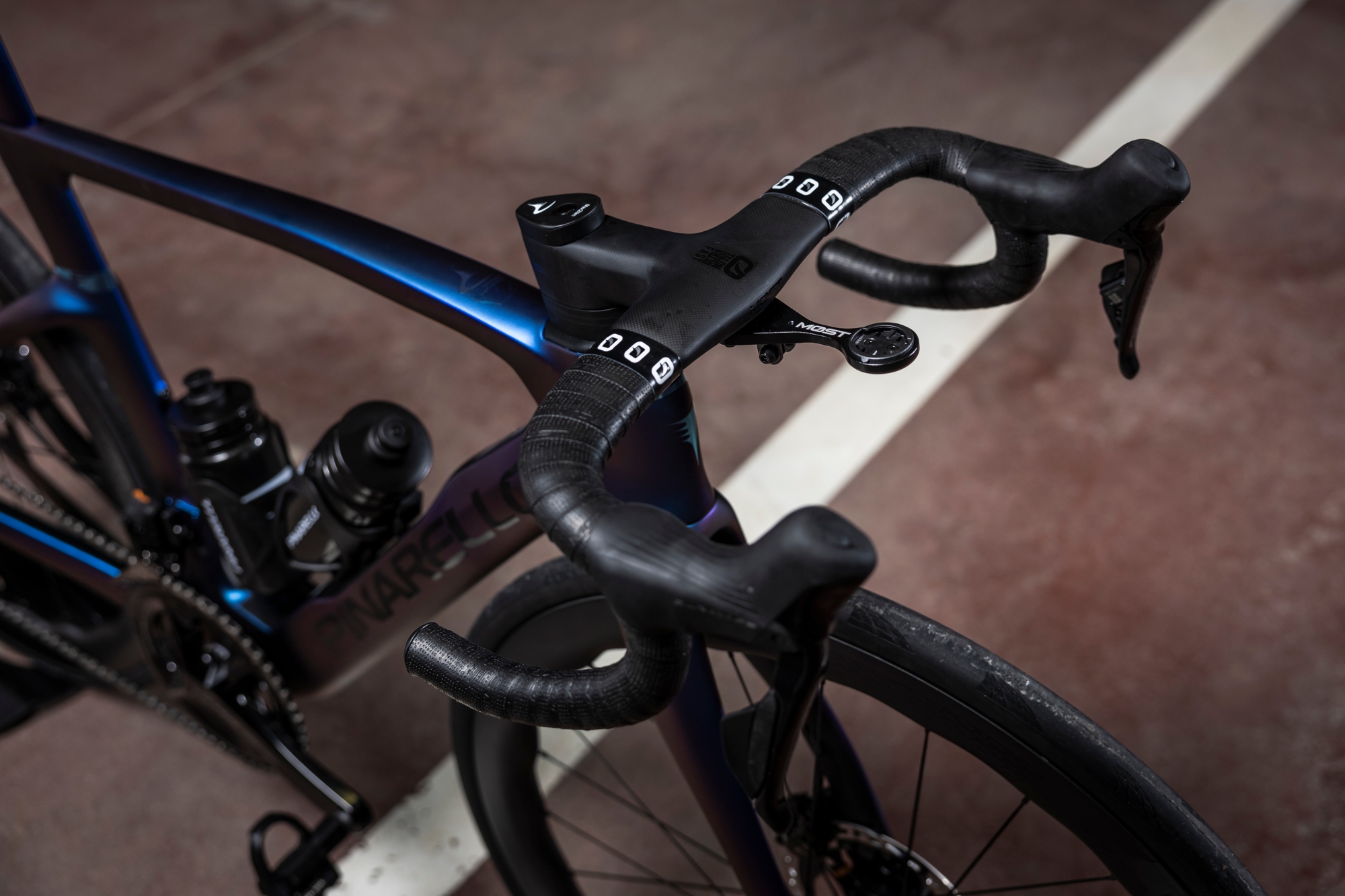
Pinarello has officially joined the flared handlebar bandwagon with the new Talon, which now features 7 degrees of flare for bars measuring 380mm and less, and 4 degrees of flare for those over 380mm (measurements taken at the hoods). Reach and drop stays fairly traditional across the range, at 80mm and 125mm respectively.
This results in new widths that, like the outgoing bars, require some explanation. The narrowest handlebar will show up as 400mm on the spec sheet, however this is measured from edge to edge at the widest part of the bars - the drops.
In reality, the 400mm handlebar measures just 340mm at the hoods, which, as we know from our very own wind tunnel testing, will likely make more difference than the other frame optimisations.
For those that aren't ready to join the narrow handlebar revolt, Pinarello still offers the new cockpit in 20mm increments up to 420mm measured at the hoods (460mm edge to edge at the drops).
Mechanics rejoice
Finally, there are one or two things for the Ineos Grenadiers mechanics to get excited about, developments we can appreciate too.
The revised headset shape has meant that the headset itself also required some redesigning. Pinarello took this as an opportunity to improve, claiming reduced weight, and more importantly better cable routing, with brake hoses now being routed at the front of the headset.
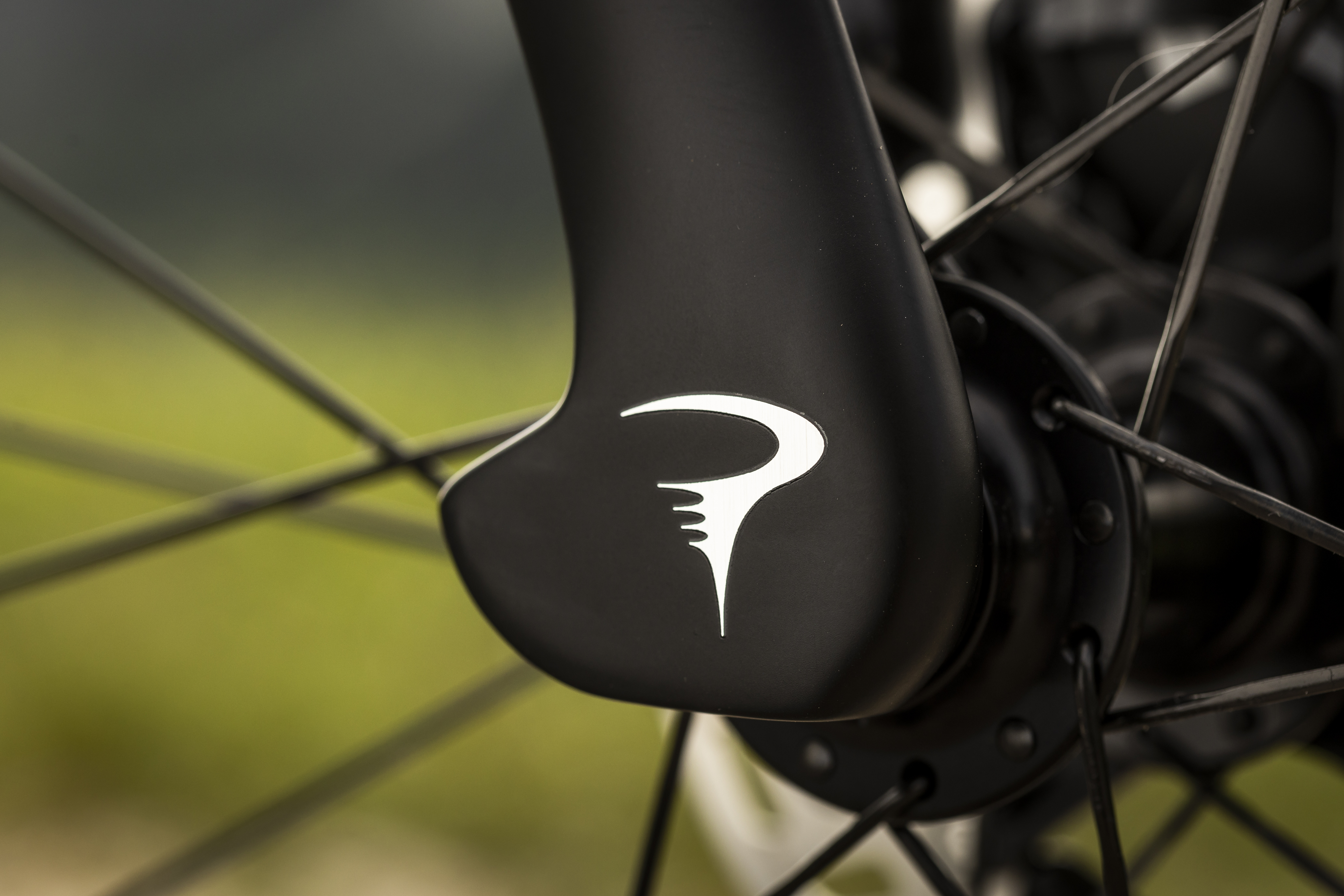
Elsewhere on the bike, you'll now find covered thru-axles, which are said to improve aerodynamics, but will also undoubtedly reduce water and dirt ingress, something which we will be particularly happy about here in the UK as the weather becomes more changeable.
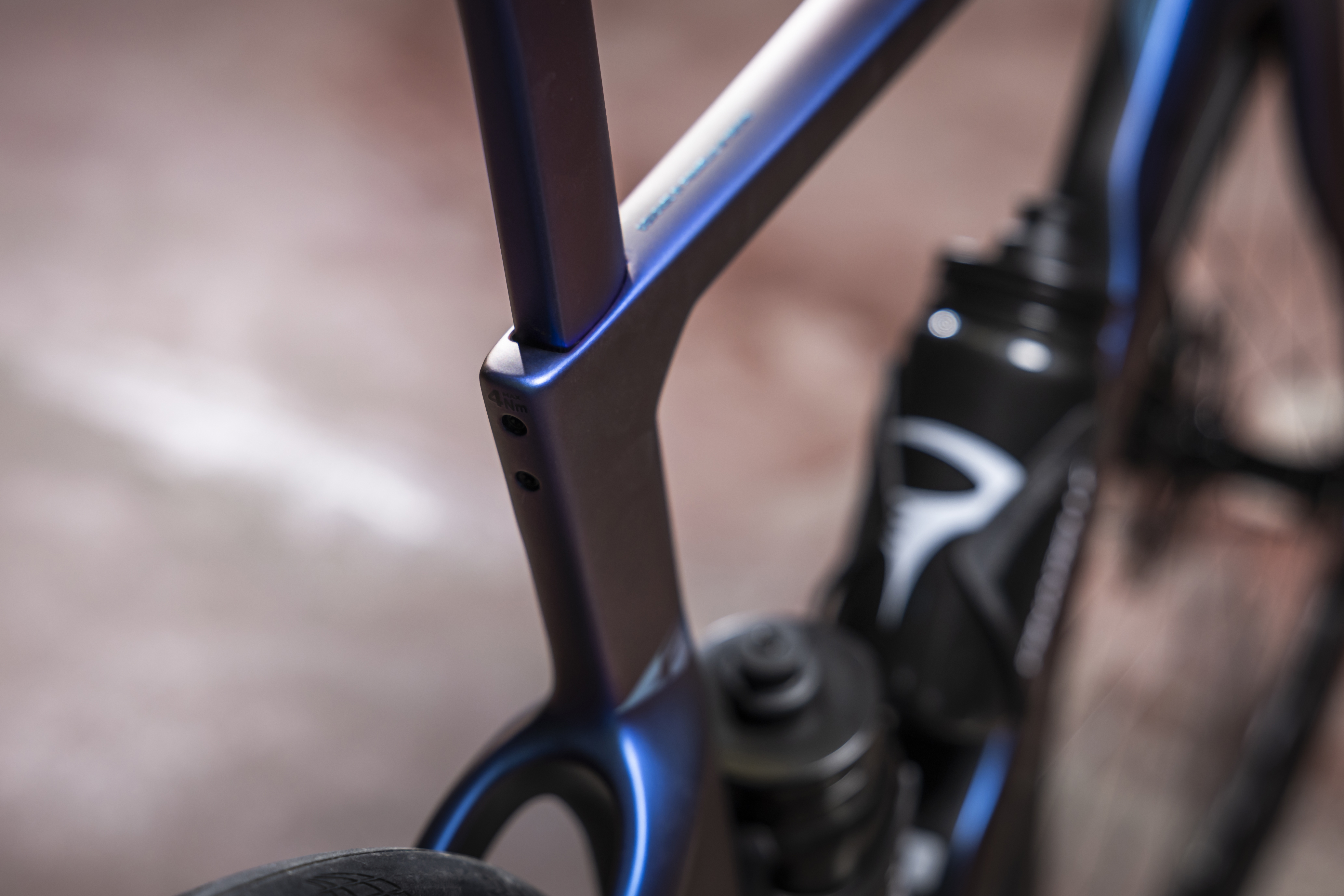
Finally, the seat clamp has become fully integrated. The revised design is no longer removable, which should mean you can't loose the clamp into the abyss that is the seat tube - particularly useful for those who remove the seatpost for travelling by car, or by plane.
Pricing and availability
As you might expect, a brand new range-topping race bike from heritage Italian brand Pinarello comes with a price tag to match, and the brand has also kept things exclusive when it comes to componentry too.
Prices start from $14,500/£12,600 for full build options, or $6,950/£5,500 for a frameset only option.
The new Pinarello Dogma F will be available in a total of just 7 models, with all major groupset brands being represented across the range.
Shimano Dura-Ace Di2 builds will be available with or without a powermeter, and specced either with Princeton Peak 4550 (6.77kg claimed weight for a size 53), or DT Swiss ARC 1400 wheelsets.
New Sram AXS builds (only available with a power meter), will be available with the same choice of wheelsets. The Sram bike coupled with Princeton Peak 4550 wheelset is the lightest build, coming in at a claimed 6.63kg for a size 53.

If you want to keep your bike Italian through and through, Pinarello offers a Campagnolo Super Record Wireless option of the new Dogma F, complete with Bora WTO 45 wheels (6.88kg claimed weight for a size 53).
Pinarello is launching the bike in 6 different colourways, including the Luxter Blue flagship colour, Luxter Red Gold, Edge Christal White, Luxter Venice, Aurik Yellow, and of course, Black on Black.
For more details, visit the Pinarello website.







